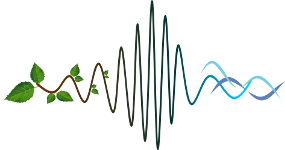Healthy seabird colonies are centers of information exchange, and generate complex and dynamic soundscapes, often raucous and overwhelming. Seabirds are highly threatened, and while potent conservation actions exist, the hurdles of traditional monitoring on remote and challenging islands have hindered the evaluation of conservation actions and threats. Thus, we are developing tools and methods for measuring and quantifying seabird island soundscapes to provide managers and ecologists with reliable metrics of abundance and diversity on seabird islands. Acoustic monitoring greatly decreases the cost and increases the utility of monitoring efforts aimed at assessing community health, monitoring trends in abundance and diversity through time, and measuring the effectiveness of conservation. Our research has focused on how acoustic metrics can be used to assess relative abundance of birds (case studies of Wedge-tailed Shearwater and Forster's Terns), the phenology of seabird colonies, and to detect rare species (case studies of Marbled Murrelets and Bryan's Shearwater). We are currently assessing how soundscape patterns may vary across manageable ecological gradients on seabird islands, and present an island scale exploration of the soundscape at California's (USA) largest seabird colony, Southeast Farallon Island.
- Other

 PDF version
PDF version
